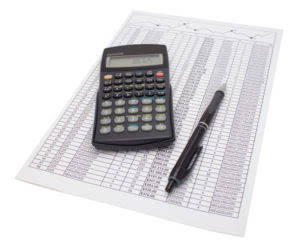Enerpize automates COGS calculations by integrating real-time inventory tracking with purchase and sales records. It ensures accurate financial reporting by automatically updating inventory values and linking transactions, minimizing human errors and enhancing efficiency. For a computer manufacturer, this would include the cost of components, assembly labor, and overhead costs like electricity for Accounting For Architects the production facility. Besides cost control and financial planning, TMC also helps companies with inventory valuation.
How to Calculate Shipping Costs for Any Business
When looking to substitute materials for a lower-cost alternative, always ensure you are not compromising the quality of your product and potentially damaging your brand. Total manufacturing cost is an important metric for providing insight into an organization’s financial health, particularly when used with other formulas. Knowing the costs of production is critical for a manufacturer that wants to stay in business.
Direct Materials
This financial metric also helps companies identify areas of overspending or underutilization, which aids in controlling costs and optimizing profit margins. Imagine that a production manager, John, in a furniture manufacturing company analyzes the TMC every quarter to determine the total manufacturing cost variance from the standard or estimated figures. For this purpose, she determines the total manufacturing cost per unit and finds out that the cost of manufacturing a chair has gone up by 10% due to the rise in labor and material costs.
Which cost of goods sold (COGS) formula should you use? A guide for product resellers and manufacturers
This helps your company stay competitive in the market by hitting the sweet spot between overpricing and underpricing. It refers to the expenses incurred on manufacturing a single piece of an item. It is computed by dividing the total manufacturing cost in a given period by the total number of units of a particular commodity produced in that period. If the company produces 5000 bags quarterly, determine the total manufacturing cost per unit. The profitability picture gained from total manufacturing cost will also govern other strategies too, such as your approach to sales and pricing. If your profits are not at the desired level, you may determine that the current sales model isn’t working and that you perhaps need new methods or to open new sales streams (such as e-commerce).
Manufacturing overhead
- Adjusted COGS accounts for additional factors like inventory write-offs, shrinkage, or manufacturing adjustments.
- By breaking down these costs, businesses can pinpoint areas for improvement and cost reduction.
- For instance, if the manufacturing costs are too high, these costs can create a dent in the company’s profit.
- This could include a supervisor, manager, or cleaner, for example, who would be involved in the planning, orchestrating, and maintenance of production.
- Changing production methods to better utilise raw materials is another way manufacturer can reduce direct material waste.
In summary, calculating the total manufacturing cost involves a comprehensive understanding of direct materials, direct labor, and manufacturing overhead. Each component has its own set of complexities and requires careful consideration and accurate data. By mastering these calculations, businesses can gain valuable insights into their production processes, enhance financial planning, and drive strategic decision-making. The Total Manufacturing Cost Formula is an essential tool for businesses to evaluate their production expenses comprehensively that helps financial health of company. Conversely, glue, sandpaper, or lubricants are indirect materials because they’re used across multiple products and do not become part of the finished good. As a result, these material expenses are accounted for in manufacturing overheads, not material costs.
You can use risk management, task management and resource management features to control production and keep to your manufacturing schedule. A furniture manufacturer starts the month with $50,000 worth of raw materials. The ending inventory is the value of unsold goods remaining at unearned revenue the end of the period.
Where does the time go?
To identify direct labor costs, you need to separate employees who play a direct role in the production line. These include machine operators, assemblers, quality control staff, and line workers. Team members not handling the production process — like supervisory staff, accountants, cleaning staff, and maintenance workers — are included in indirect labor. Simply put, total manufacturing cost is the overall sum of money required to manufacture a product.
- It’s important to regularly review and adjust the predetermined overhead rate to ensure accuracy.
- An electronics manufacturer might routinely review material waste and implement measures to reduce it, leading to ongoing cost control.
- While this is a simplified view of direct labor calculation, accountants also include the benefits, overtime pay, training costs, and payroll taxes when calculating the hourly rate.
- It is crucial in the business and reveals a certain order of the production processes in relation to the set objectives.
- Direct costs change based on the production period and how much product you manufacture.
- In this post, we explore total manufacturing cost and its utility to manufacturers.
- If the figure increases between manufacturing accounting periods, it can indicate that resources are not being used efficiently.
- Total Manufacturing Cost (TMC) refers to the overall money spent on the production activities for processing the raw material into finished goods in a given period (quarter or year).
- This metric helps businesses determine the financial efficiency of their production processes, set appropriate pricing strategies, and identify areas for cost reduction.
- Besides cost control and financial planning, TMC also helps companies with inventory valuation.
- Total manufacturing cost is a financial metric that expresses the total amount of funds spent on all production activities during a financial period.
- The factory system revolutionized this process by bringing together large numbers of workers under one roof, utilizing machinery to increase productivity.
Manufacturing costs constitute the entirety of expenses incurred total manufacturing cost formula during the production of goods. For any manufacturing operation, these costs are pivotal in determining profitability and competitiveness in the market. Understanding the components of manufacturing costs provides a clear picture of where expenses arise and how they impact the overall financial health of the business. Taking a look at the total manufacturing cost is insightful for making your manufacturing company more cost-effective.



